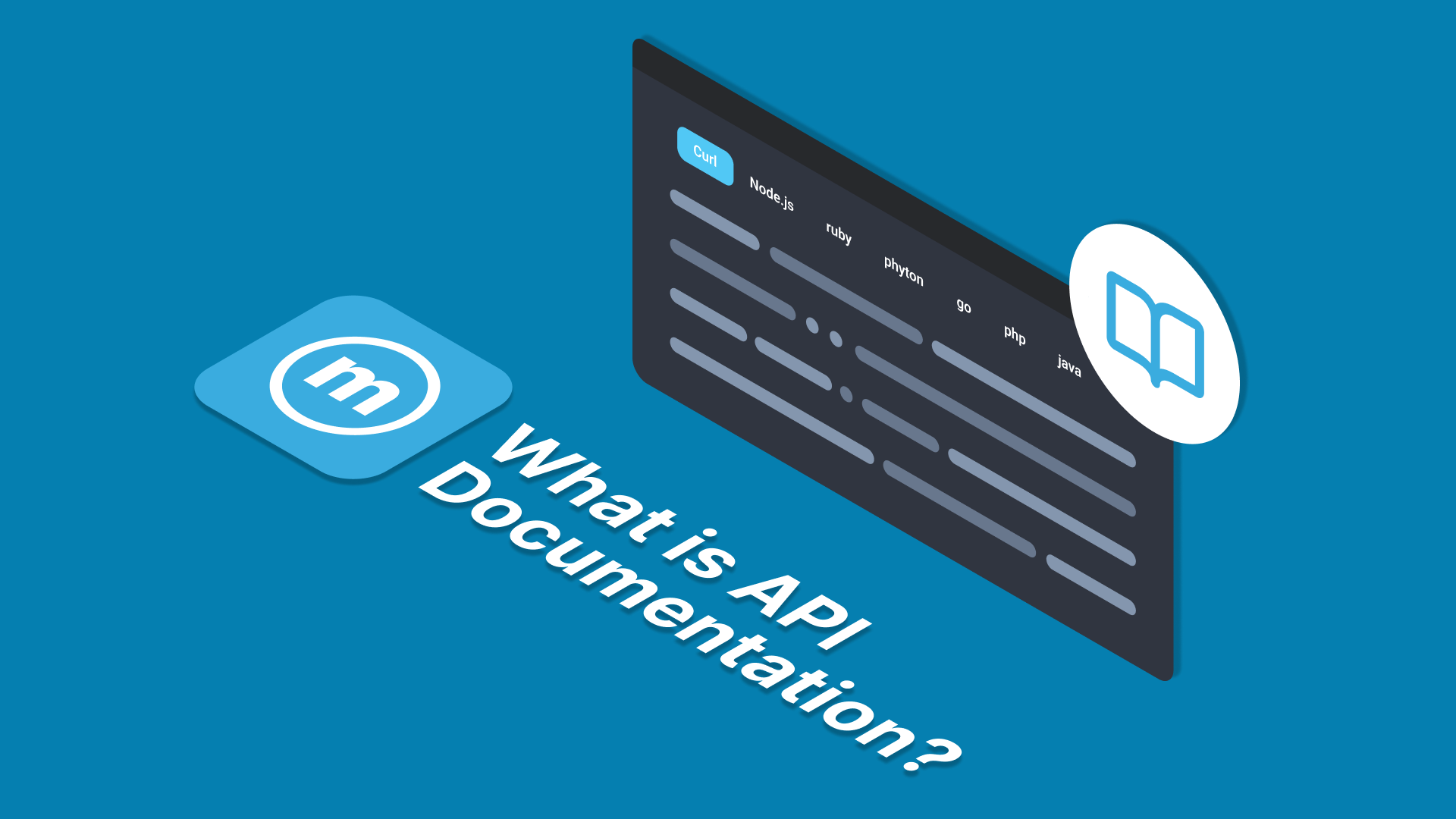What is API Documentation and Why Does It Matters?

In today's technology world, API-first is an increasingly popular development model. This approach enables teams to build high-performance applications while also supporting an API-as-a-Product strategy.
Many organizations have adopted an API-first strategy. They use it to help them develop high-quality APIs that advance business goals in various ways. API documentation plays an important role in ensuring any API's success, whether private or public.
About API-First World
An API-first world has emerged as a new paradigm in software development. It emphasizes the critical role APIs play in building connected and accessible modern applications. Developers prioritize API development in the API-first approach. Solid API design precedes application functionality in this approach.
An API-first approach offers several advantages in software development:
- Encourages modular and structured design, allowing developers to build applications that are easier to maintain and extend.
- Facilitates code and functionality reuse, reducing duplication and increasing development efficiency.
- Align application development with the principles of service, where applications communicate via APIs.
Comprehensive and detailed API documentation is key to the success of an API-first approach. Good API documentation clearly explains how developers can use the API to access and manipulate data. It includes the API call syntax, required parameters, and expected response codes. It also provides code examples and information about best practices for using the API effectively.
By adopting an API-first approach and developing quality API documentation, developers can build connected, scalable, and maintainable applications. They can also speed up the development process and improve collaboration within distributed development teams.
What is Application Programming Interface (API) Documentation?
API documentation is a set of easy-to-read instructions for using and integrating an API. It includes detailed information about the endpoints, methods, resources, security protocols, parameters, and headers available in the API.
Effective API documentation improves the developer experience for private, partner, and public APIs. But, it also offers different benefits for each type of API. For example, private API documentation improves collaboration between teams. Meanwhile, public API documentation makes it easier for leaders to achieve their business goals.
Teams that prioritize API documentation typically see higher API adoption rates, fewer support tickets, and increased revenue.
Why is API Documentation Important in an API-First World?
An API-first approach also complements the API-as-a-Product strategy. In this condition, the API acts as a product for third parties.
API documentation plays an important role in ensuring the success of any API. For example, internal API documentation facilitates collaboration between teams, reduces code duplication, and simplifies the onboarding process for new employees.
The following are some of the benefits of API documentation that make it crucial in an API-first world.
1. Facilitates Developer Understanding and Adoption
Comprehensive documentation provides developers with a clear understanding of the API's capabilities, functionalities, and usage guidelines. This enables them to integrate the API seamlessly into their applications without confusion or guesswork.
2. Enables Efficient Development and Collaboration
Well-documented APIs streamline the development process by reducing the time spent on deciphering API specifics. Developers can quickly identify the API's endpoints, parameters, and responses, allowing them to focus on implementing the desired functionality.
3. Promotes Consistent and Reusable Code
Clear documentation encourages developers to adhere to consistent coding practices and utilize the API in a standardized manner. This consistency emphasizes that users can reuse code, reduce duplication, and perform maintenance more easily.
4. Enhances Developer Experience and Satisfaction
Easy-to-navigate and informative documentation improves the overall developer experience. Developers can readily find the information they need, reducing frustration and fostering a positive perception of the API.
5. Supports Services Architecture
API-first development often aligns with services architecture, where independent services communicate through APIs. Documentation plays a vital role in ensuring that services interface seamlessly and effectively.
6. Empowers Self-Service Discovery and Integration
Comprehensive documentation enables developers to discover and integrate APIs on their own. This reduces the need for constant handholding from API providers and accelerates the adoption of new services.
7. Facilitates Third-Party Integration and Ecosystem Growth
Clear documentation encourages third-party developers to integrate the API into their applications, expanding the API's reach and fostering a vibrant ecosystem.
8. Improves Onboarding and Knowledge Transfer
Thorough documentation serves as a valuable resource for onboarding new developers and transferring knowledge within the team. It ensures that everyone has consistent access to the same information.
9. Enhances Maintenance and Future Development
Clear documentation simplifies the maintenance and ongoing development of the API. Developers can easily understand the API's structure and behavior. So, it will be easier to them to identify and fix issues or introduce new features.
10. Reduces Support Burden
Comprehensive documentation minimizes the need for developer support by providing answers to common questions and troubleshooting guidelines. This frees up support teams to focus on more complex issues.
In summary, API documentation is a crucial element in an API-first world. It empowers developers, promotes collaboration, accelerates development, and fosters innovation. By investing in well-crafted documentation, API providers can ensure the success and widespread adoption of their APIs.
The Main Components of API Documentation
API documentation generally consists of several main components and a few additional components. Below you can match which components are and are not in your API documentation, so you can complete them if they are missing.
1. Overview
The overview section should provide a high-level overview of the API, including its purpose, features, and limitations. This section should be brief and to the point. It should provide enough information to give developers a good understanding of what the API does.
2. Endpoints
This section explains the API endpoints, including the URL, HTTP methods, and required parameters. The endpoints component should be comprehensive and include all of the endpoints that are available in the API.
3. Data Formats
This section explains when the API uses certain data formats. This section should include information about the structure of the data.
4. Error Handling
The error handling section contains an explanation of how to handle errors that occur when using the API. This section should include information about the different types of errors that can occur, as well as how to handle them.
5. Examples
These code samples of using the API key should be clear and concise. Also, they should demonstrate how to use the API to perform common tasks.
6. Troubleshooting
This last section should guide troubleshooting problems that occur when using the API. This section should include information about common problems that occur, as well as how to resolve them.
Additional Components
- Security
- Performance
- Best practices
- Changelog
By including all of the necessary components, you can create API documentation that is comprehensive and helpful. This documentation will help developers understand and use your API easily. It will help you to achieve your API goals.
API Documentation Best Practices
API documentation serves as the essential reference guide for developers who want to integrate and utilize your API effectively. Well-crafted documentation enhances the developer experience, promotes wider adoption, and simplifies the maintenance and development of your API. Here are some key API documentation best practices to follow:
- Clarity and Conciseness: Strive for clear and concise language that is easy to understand. Avoid jargon and overly technical terms that might confuse or alienate users.
- Comprehensive Coverage: Provide detailed explanations for all aspects of your API, including endpoints, parameters, data formats, error handling, and security mechanisms. Leave no stone unturned, ensuring developers have all the information they need to use your API confidently.
- Code Examples and Usage Scenarios: Supplement your explanations with real-world code examples and usage scenarios. These examples demonstrate how to implement the API in different programming languages. It also illustrates practical applications of the API's features.
- Easy Navigation and Search Functionality: Design your documentation with a clear and intuitive structure. So it will be easy for developers to find the information they need quickly. Implement effective search functionality to allow users to locate specific keywords or topics effortlessly.
- Versioning and Changelog: Identify the version of your API. It also maintains a changelog that records all changes and updates made to the API over time. This changelog helps developers understand the evolution of the API and any potential impact on their integrations.
- Regular Updates and Maintenance: Keep your documentation up-to-date with the latest features, changes, and best practices. Regular maintenance ensures that developers always have access to the most accurate and relevant information.
- Community Engagement and Feedback: Encourage community engagement and feedback from developers who use your API. Actively listen to their suggestions and incorporate their feedback into your documentation updates. This collaborative approach helps refine the documentation and address any gaps or pain points.
- Tooling and Automation: Utilize documentation tools and automation frameworks to streamline the process of creating, updating, and maintaining your documentation. These tools can help ensure consistency, quality, and efficiency in your documentation efforts.
- Inclusiveness: Make your documentation accessible to a diverse range of developers, including those with disabilities or language barriers. Consider providing alternative formats, such as plain text or audio, and localize your documentation into multiple languages.
- Continuous Improvement: Strive to improve your API documentation based on feedback, usage patterns, and emerging trends. Regularly review and refine your documentation to ensure it remains relevant, valuable, and user-centric.
API Documentation Examples
In this section, we will show examples of API documentation. With this, we hope it’ll be easier for you to apply it to your business.
1. Stripe API Documentation
Stripe API documentation provides comprehensive documentation about their API. It includes API descriptions of endpoints, methods, and parameters. It also provides the examples of common requests and responses. This documentation also includes API usage guides, troubleshooting, and development resources.
2. mailtarget
As an email API service provider, our company also has complete API documentation. Starting with an introduction, move on to endpoints, API conventions, and errors. The last part is important regarding the email delivery status. So users will know the cause of their email sending failure and the solution.
3. MTARGET
Similar to before, MTARGET API documentation explains the use of the HTTP API in sending transactional emails. There is a short code to use directly in their email.
4. Twilio API Documentation
Twilio API documentation provides comprehensive documentation about their API. They show the endpoints, methods, parameters, common requests, and responses. This documentation also includes API usage guides, troubleshooting, and development resources.
5. GitHub API Documentation
GitHub API documentation provides descriptions of endpoints, methods, and parameters, as well as examples of common requests and responses. This documentation also includes API usage guides, troubleshooting, and development resources.
At this point, you now understand what API documentation and its components are. You have also received provisions regarding the best way to create API docs along with examples.Please visit our blog to read more articles about email APIs. Besides that, you can register directly here to try our email API service.
(V.V)

